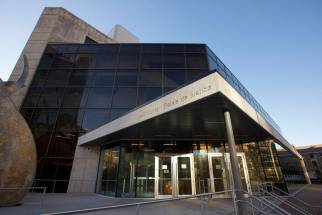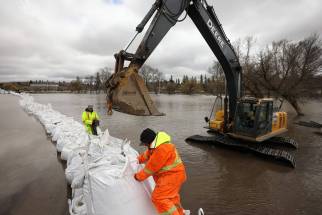Education property tax cut misguided
Read this article for free:
or
Already have an account? Log in here »
To continue reading, please subscribe:
Monthly Digital Subscription
$0 for the first 4 weeks*
- Enjoy unlimited reading on winnipegfreepress.com
- Read the E-Edition, our digital replica newspaper
- Access News Break, our award-winning app
- Play interactive puzzles
*No charge for 4 weeks then price increases to the regular rate of $19.00 plus GST every four weeks. Offer available to new and qualified returning subscribers only. Cancel any time.
Monthly Digital Subscription
$4.75/week*
- Enjoy unlimited reading on winnipegfreepress.com
- Read the E-Edition, our digital replica newspaper
- Access News Break, our award-winning app
- Play interactive puzzles
*Billed as $19 plus GST every four weeks. Cancel any time.
To continue reading, please subscribe:
Add Free Press access to your Brandon Sun subscription for only an additional
$1 for the first 4 weeks*
*Your next subscription payment will increase by $1.00 and you will be charged $16.99 plus GST for four weeks. After four weeks, your payment will increase to $23.99 plus GST every four weeks.
Read unlimited articles for free today:
or
Already have an account? Log in here »
Hey there, time traveller!
This article was published 18/05/2022 (1300 days ago), so information in it may no longer be current.
The absurdity of the Stefanson government’s decision to cut education property taxes while posting massive deficits and underfunding health care was laid bare last week.
A recent CBC report showed how the tax cut is disproportionately benefiting large commercial properties and those who own expensive homes. The Polo Park shopping mall, for example, received a $1-million rebate cheque in 2021, while some homeowners in high-priced neighbourhoods benefited from tax cuts as high as $6,000.
Meanwhile, the province is projecting a deficit of $548 million this year and health-care spending is rising by a mere 1.6 per cent.
This is not just bad policy, it’s reckless.

Former premier Brian Pallister announced the first instalment of the education property tax cut last year: a 25-per-cent rebate for homeowners and a 10-per-cent cut for commercial properties. He announced the policy while his government projected a $1.6-billion pandemic-driven deficit.
Even though his successor, Premier Heather Stefanson, reversed most of Mr. Pallister’s proposed public school reform policies, she kept most of the education property tax piece. This year, the rebate will rise to 37.5 per cent for homeowners and remain at 10 per cent for commercial properties.
The cost to the public treasury is exorbitant: an estimated $246.5 million last year and $349.9 million this year. That’s equivalent to a one-percentage point cut in the province’s retail sales tax.
An analysis of Winnipeg properties revealed the top 10 per cent of education tax rebate recipients received four times the amount of those in the bottom 10 per cent, the CBC found.
Not only is it bad policy to cut taxes while posting deficits and underfunding front-line services, the tax cuts are benefiting the wealthiest Manitobans the most.
Ms. Stefanson said it’s important for people to “know the facts” when it comes to the education property tax rebate. She said the public should know that government is also spending “record amounts” on health care and education. In fact, governments almost always spend “record amounts” on front-line services during non-recessionary periods because overall spending typically rises each year, even if marginally, as the population grows and the economy expands.
One fact Ms. Stefanson conveniently omits from her commentary is how government will have to borrow the $349.9 million it’s handing out in tax cuts, an amount that will be added to the province’s growing debt, estimated to reach $30.5 billion this year. Those borrowings will have to be repaid with interest by future generations.
A 1.6 per cent spending increase in health care (as well as an additional $110 million earmarked for surgical and diagnostic wait times) may be record spending, but it’s not nearly enough to respond to the multiple problems facing hospitals, especially when it comes to severe staff shortages.
One fact Ms. Stefanson conveniently omits from her commentary is how government will have to borrow the $349.9 million it’s handing out in tax cuts, an amount that will be added to the province’s growing debt, estimated to reach $30.5 billion this year. Those borrowings will have to be repaid with interest by future generations.
Finance Minister Cameron Friesen said last week that “Manitobans are crying out for relief” and that his government is responding with a property tax rebate. However, that’s not what most Manitobans are calling for. The government’s own pre-budget consultations showed the vast majority of respondents chose more funding for health care as their top budget priority. Cutting taxes was near the bottom of the list.
Ms. Stefanson pledged last year when she became leader of the Progressive Conservative party that she would do a better job of listening to Manitobans than her predecessor did. It would appear the premier did not listen to Manitobans on the issue of tax cuts. If she did, she chose not to heed their advice.









